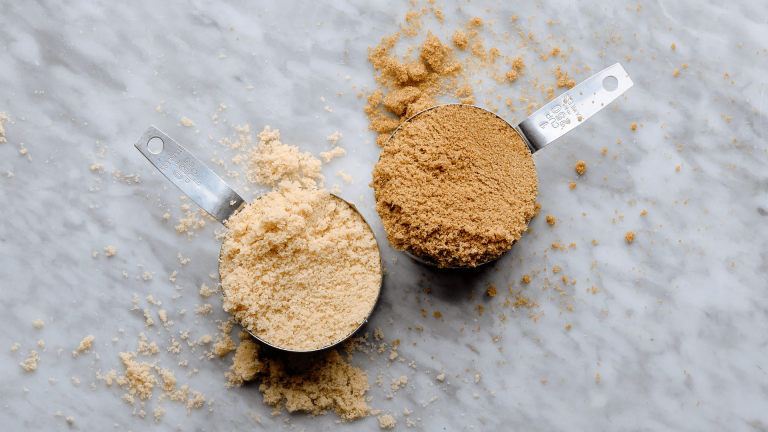If you’ve ever reached for brown sugar only to find it’s turned into a rock-hard lump, you’re not alone. One day it’s soft and crumbly, and the next it’s as solid as a brick. The good news? There’s a simple reason this happens – and a few easy tricks to make sure it doesn’t happen again.
Read more: How to make sugar cubes
Why brown sugar hardens
Brown sugar gets its lovely caramel flavour and slightly sticky texture from molasses – which also gives it moisture. Over time, when that moisture evaporates, the sugar dries out and hardens. The main culprit? Air exposure. If your bag isn’t properly sealed or your container doesn’t close tightly, your brown sugar will start to lose its softness.
The best way to store brown sugar
The key to keeping brown sugar soft is storing it in an airtight container. You don’t need anything fancy – any container with a tight-fitting lid will do the job. The goal is to lock in the moisture and keep the air out.
Avoid keeping brown sugar in the fridge, as the cold air actually draws out moisture and makes clumping worse. However, if you live somewhere very dry, storing it in the freezer can be helpful. Just make sure it’s sealed tightly in a container or heavy-duty plastic bag. When you’re ready to use it, let it come to room temperature before opening.
How long brown sugar lasts
When properly stored in a cool, dry cupboard, brown sugar can last up to two years. Always check for any odd smells or changes in colour, but generally, it stays good for a long time if sealed well.
What to do if brown sugar hardens
If your brown sugar has already gone hard, don’t throw it out – it can be saved!
- Quick fix: Wrap the sugar in a damp (not wet) towel and pop it in the oven at a low temperature for a few minutes, or microwave it in a microwave-safe bowl with a damp paper towel for a few seconds. Be careful not to melt it.
- Slow fix: Place a damp paper towel or a special terra cotta sugar saver (available at baking shops) inside the container. Leave it for a few hours or overnight – the moisture will gradually soften the sugar again.
Storage myths to avoid
You might have heard that adding a slice of apple or bread to your brown sugar keeps it soft. While this trick does work, it’s risky. If you forget to remove the fruit or bread in time, it can go mouldy and spoil your sugar. It’s safer (and cleaner) to stick with the damp towel or terra cotta method.
Brown sugar can be a bit fussy, but with the right storage, it’ll stay perfectly soft and ready for your next baking day. Keep it airtight, skip the fridge, and show it a little TLC – your cookies, crumbles, and caramel sauces will thank you.
ALSO SEE: YOUR CHEAT SHEET TO CUTTING BACK ON SUGAR
Image: Pexels

